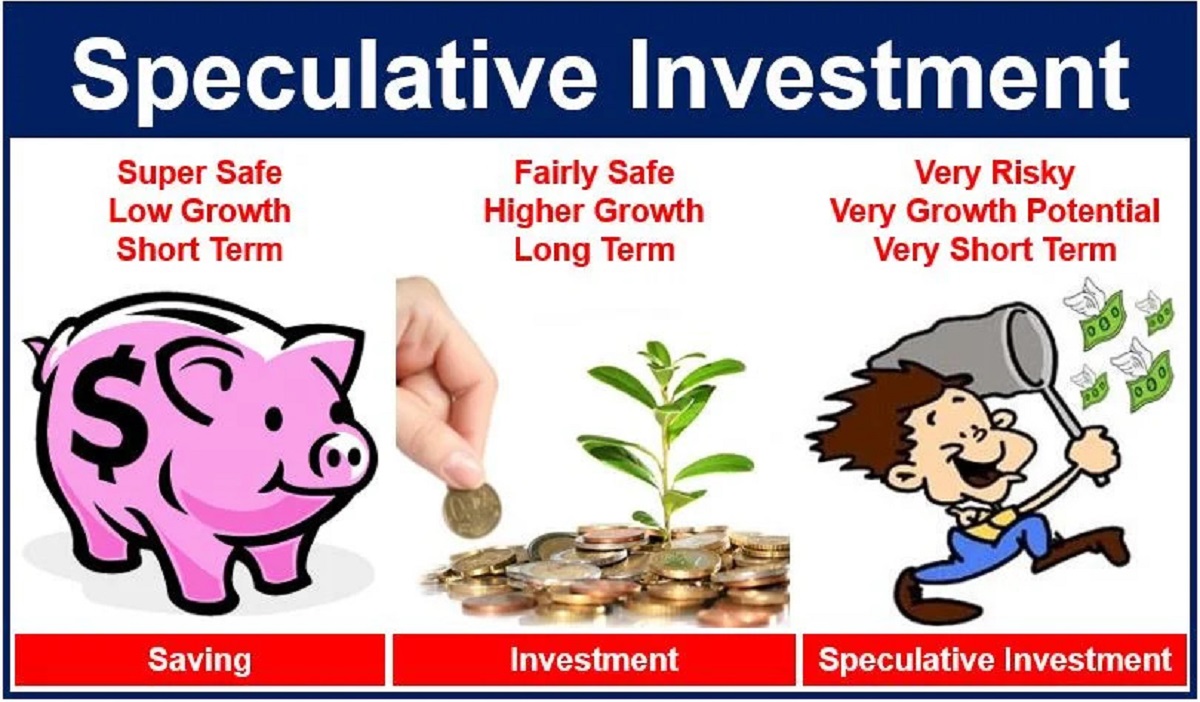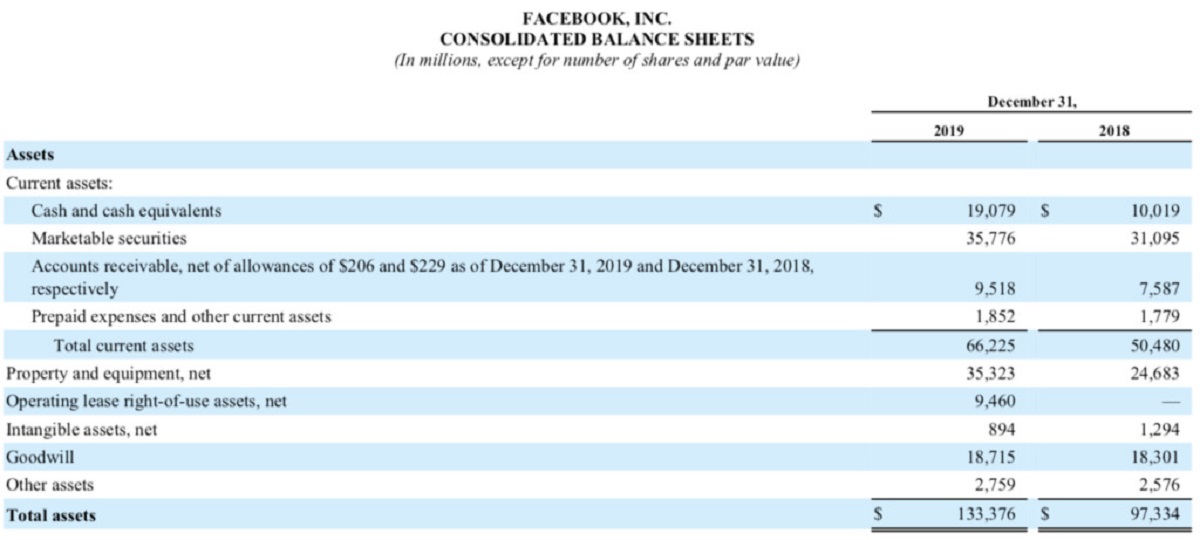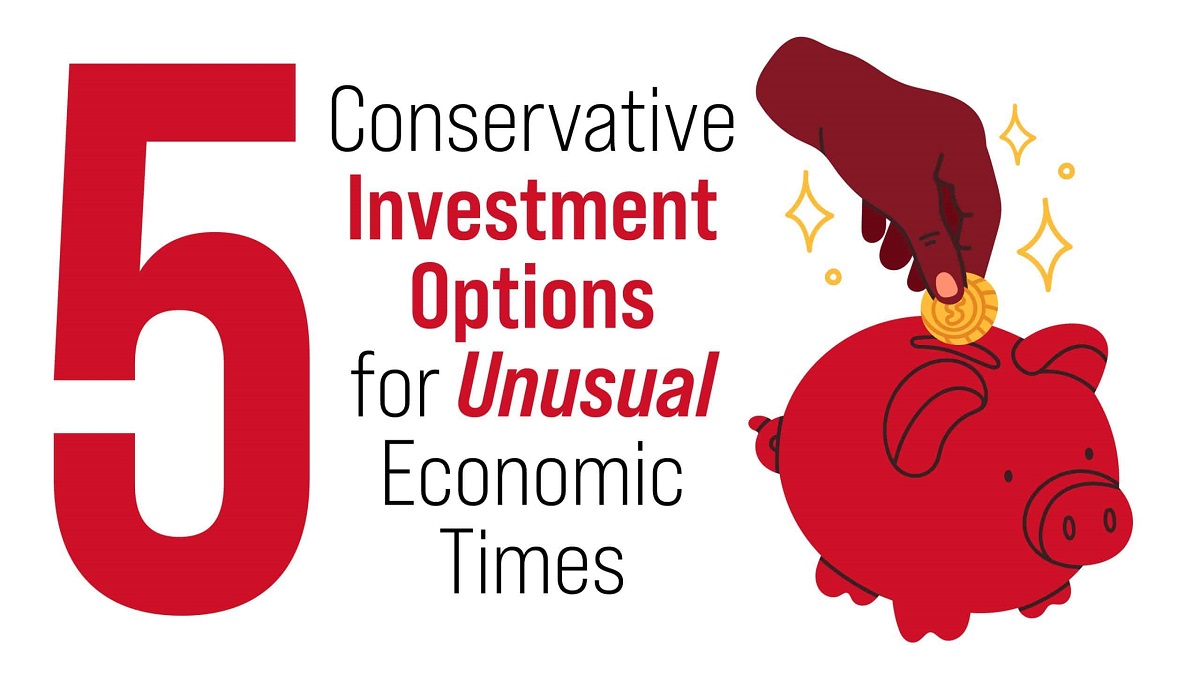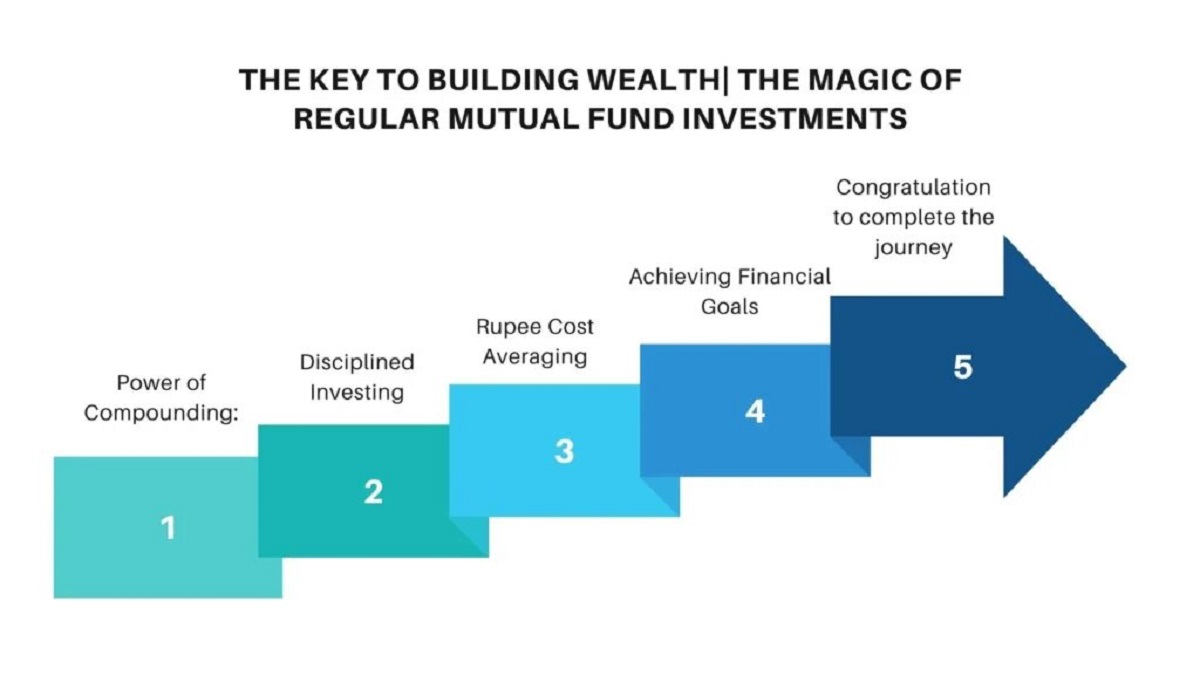Introduction
Welcome to the world of investments! Whether you’re a seasoned investor or just starting out, understanding the fundamentals of investments is essential for financial success. In this article, we’ll explore what investments are, why they matter, and the different types of investment options available to you.
An investment refers to allocating resources, such as money, time, or effort, into something with the expectation of obtaining a return or benefit in the future. The goal of investing is to grow one’s wealth over time. Rather than letting your money sit idle, investing allows you to put it to work and potentially generate returns that outpace inflation.
Investing is not limited to financial markets or stocks and bonds. It’s a broad concept that encompasses various asset classes, including real estate, mutual funds, commodities, and now even cryptocurrencies. Each investment option carries its own level of risk and potential rewards.
So, why should you invest? The simple answer is the potential for higher returns compared to traditional savings methods like keeping your money in a savings account. While there are risks involved, investing allows you to achieve long-term financial goals, such as buying a house, funding your children’s education, or enjoying a comfortable retirement.
Caution must be exercised when it comes to investments, as the value of investments can fluctuate. Understanding the concept of risk and return is crucial. The general rule is that higher risks are associated with the potential for higher returns. However, it’s also important to diversify your investment portfolio to mitigate risks and avoid putting all your eggs in one basket.
Throughout this article, we’ll explore different types of investments that you can consider, such as stocks, bonds, mutual funds, real estate, commodities, and even the emerging trend of cryptocurrencies. Each investment option has its unique features and potential rewards.
As we delve deeper into the world of investments, we’ll also discuss various investment strategies you can adopt to achieve your financial goals. From diversification and dollar-cost averaging to value investing and growth investing, understanding these strategies can help you make informed and strategic investment decisions.
Investing is not a one-size-fits-all approach, and it’s important to align your investment choices with your risk tolerance, financial goals, and timeline. By gaining knowledge about investments and understanding the different options available, you can make informed decisions that align with your financial objectives.
So, let’s dive in and explore the exciting world of investments!
What is an Investment?
An investment is the act of allocating resources, such as money, time, or effort, into something with the expectation of receiving a profitable return or benefit in the future. Essentially, it involves putting your money to work in order to generate additional income or grow your wealth over time.
When you invest, you are essentially purchasing an asset or a financial instrument with the hope that it will appreciate in value and provide you with a profit. Investments come in various forms, including stocks, bonds, mutual funds, real estate, commodities, and even cryptocurrencies.
Investing is different from saving. While saving is the act of setting aside money for future use, investing involves taking calculated risks to potentially earn higher returns. Investing allows your money to work harder for you by generating income, capital gains, or both.
One of the key aspects of investing is the concept of risk and return. Generally, investments with higher potential returns also carry higher levels of risk. It’s important to understand the risk involved and evaluate your risk tolerance before making investment decisions.
There are two main types of investments: equity investments and debt investments. Equity investments refer to buying shares or ownership stakes in a company, such as stocks. As a shareholder, you have the potential to benefit from the company’s profits through dividends and capital appreciation. Debt investments, on the other hand, involve lending money to a borrower, such as purchasing bonds, and earning interest on the loaned amount.
Investments can be short-term or long-term in nature. Short-term investments typically have shorter maturity periods and provide quick returns, while long-term investments require a longer holding period and have the potential for higher returns over time.
Investing is not a guaranteed path to wealth, and there are risks involved. The value of investments can fluctuate based on various factors, such as market conditions, economic trends, and company performance. It’s important to carefully research and analyze potential investment opportunities before making any decisions.
Ultimately, the goal of investing is to grow your wealth and achieve your financial objectives. It’s a way to build a nest egg for retirement, fund your children’s education, or simply enjoy a more comfortable lifestyle. By understanding the principles of investing and staying informed about the market trends, you can make informed decisions and navigate the world of investments successfully.
Why Should You Invest?
Investing is an essential tool for achieving financial success and building wealth over time. While the idea of taking risks with your hard-earned money may seem daunting, there are several compelling reasons why you should consider investing.
First and foremost, investing has the potential to generate higher returns compared to traditional savings methods. While leaving your money in a savings account may provide some minimal interest, the returns are often limited. Investing, on the other hand, offers the possibility of earning significant profits through capital appreciation, dividends, or interest income.
Another reason to invest is to combat the impact of inflation. Inflation erodes the purchasing power of your money over time. By investing, you have the opportunity to outpace inflation and ensure that your money retains its value and grows over the long term.
Investing also allows you to diversify your financial portfolio. By spreading your investments across different asset classes, such as stocks, bonds, real estate, and commodities, you can reduce the overall risk of your portfolio. Diversification helps protect your investments from potential losses and provides the opportunity for greater returns.
Furthermore, investing can help you achieve your financial goals. Whether you’re saving for a down payment on a house, funding your children’s education, or planning for retirement, investing can provide the means to achieve these milestones. By investing consistently and wisely, you can accumulate the necessary funds to fulfill your dreams.
Investing also fosters a sense of financial independence and empowerment. By taking control of your financial future, you can make informed decisions and actively participate in growing your wealth. Investing allows you to cultivate financial literacy, develop an understanding of market dynamics, and stay informed about economic trends.
Moreover, investing can provide opportunities for passive income. Certain investments, such as rental properties or dividend-yielding stocks, can generate regular income without requiring active involvement. Passive income streams can offer financial stability and the freedom to pursue other interests or ventures.
Lastly, investing encourages disciplined saving and financial planning. Regularly setting aside money for investments cultivates a habit of saving and instills financial discipline. Investing forces you to evaluate your financial goals, assess your risk tolerance, and develop a long-term financial strategy.
It’s important to note that investing involves risk and the potential for losses. It’s essential to conduct thorough research, seek professional advice when needed, and make informed decisions based on your risk tolerance and financial goals.
In summary, investing offers the potential for higher returns, helps combat inflation, diversifies your portfolio, and allows you to achieve financial goals. It empowers you to take control of your financial future, generates passive income, and encourages disciplined saving. By investing wisely and staying informed, you can pave the way for long-term financial success.
Different Types of Investments
When it comes to investing, there is a wide range of options available to suit different investment goals, risk tolerances, and time horizons. Understanding the different types of investments can help you make informed decisions and tailor your investment portfolio to your specific needs. Here are some of the key types of investments to consider:
Stocks: Stocks, also known as equities, represent ownership in a company. When you buy stocks, you become a shareholder and have the potential to benefit from the company’s profits through dividends and capital appreciation. Stocks can be purchased individually or through mutual funds or exchange-traded funds (ETFs).
Bonds: Bonds are debt instruments issued by governments or corporations to raise capital. When you invest in bonds, you are essentially lending money to the entity issuing the bond. In return, you receive periodic interest payments and the principal amount when the bond matures.
Mutual Funds: Mutual funds pool money from multiple investors to invest in a diversified portfolio of stocks, bonds, or other assets. They offer a convenient way to access a wide range of investments and are managed by professional fund managers.
Real Estate: Investing in real estate involves purchasing properties with the aim of generating income through rental payments or selling the property for a profit. Real estate investments can include residential properties, commercial properties, or real estate investment trusts (REITs).
Commodities: Commodities include physical goods such as gold, oil, natural gas, agricultural products, and metals. Investing in commodities can provide a hedge against inflation and diversification benefits. Investors can gain exposure to commodities through futures contracts, commodity ETFs, or by directly owning physical commodities.
Cryptocurrency: Cryptocurrencies, such as Bitcoin or Ethereum, have gained popularity in recent years. These digital currencies operate on blockchain technology and offer the potential for high returns, but they also come with higher volatility and risk.
The choice of investment types depends on various factors, including your financial goals, risk tolerance, and investment horizon. It can be beneficial to diversify your investment portfolio by investing in multiple asset classes to mitigate risk and capture different growth opportunities.
Additionally, it’s important to consider your investment timeframe. Some investments, like stocks, are more suitable for long-term growth, while others, such as fixed-income securities, may provide more stability and regular income in the short term.
Remember that each investment type carries its own set of risks and potential rewards. It’s crucial to conduct thorough research, seek professional advice when needed, and stay informed about market trends and economic factors that can impact your investments.
By understanding the different types of investments and aligning them with your financial goals and risk tolerance, you can create a well-rounded investment portfolio that helps you achieve long-term financial success.
Stocks
Stocks, also known as equities, are one of the most popular and well-known types of investments. When you invest in stocks, you are buying ownership shares in a company, making you a shareholder. Stocks offer the potential for capital appreciation and the opportunity to share in the company’s profits through dividends.
There are two main types of stocks: common stocks and preferred stocks. Common stocks provide voting rights and the potential for higher returns but come with greater risk. Preferred stocks, on the other hand, offer fixed dividend payments but generally do not come with voting rights.
Investing in stocks allows you to participate in the growth and success of individual companies and the broader stock market. The value of stocks can fluctuate based on factors such as company performance, market conditions, economic trends, and investor sentiment.
There are several ways to invest in stocks. You can buy individual stocks of specific companies through a brokerage account. This approach allows for greater control and enables you to select companies you believe will perform well. However, it also requires thorough research and monitoring of individual stocks.
An alternative approach is to invest in mutual funds or exchange-traded funds (ETFs) that hold a diversified portfolio of stocks. These funds are managed by professionals who select and manage the stocks on your behalf. Investing in mutual funds or ETFs provides instant diversification and reduces the risk associated with investing in a single company.
When investing in stocks, it’s important to consider your investment horizon and risk tolerance. Stocks tend to be more volatile in the short term but have historically offered higher returns over the long term. If you have a longer investment horizon and can tolerate short-term fluctuations, stocks may be a suitable option.
It’s also crucial to conduct thorough research on the companies you are considering investing in. Analyze factors such as their financial health, competitive position, industry trends, and management team. This information can help you make informed investment decisions and evaluate the potential risks and rewards.
Furthermore, staying informed about market trends, economic indicators, and geopolitical events can provide valuable insights for stock investing. Regularly monitoring your investments and adjusting your portfolio as needed is essential for long-term success.
Investing in stocks carries risks, and it’s possible to lose money. However, by diversifying your portfolio, staying informed, and investing for the long term, stocks can offer the potential for significant returns and play a crucial role in building wealth over time.
Bonds
Bonds are a popular type of investment that involve lending money to a government or corporation in exchange for regular interest payments and the return of the principal amount at maturity. When you invest in bonds, you essentially become a creditor to the issuer.
Bonds are considered fixed-income investments because they provide a predictable stream of income through periodic interest payments, also known as coupon payments. The interest payments are typically made semi-annually or annually and are calculated based on the bond’s face value and the stated interest rate, also known as the coupon rate.
There are various types of bonds available in the market, including government bonds, corporate bonds, municipal bonds, and treasury bonds. Government bonds are issued by national governments, while corporate bonds are issued by private companies. Municipal bonds are issued by local governments or municipalities to fund projects such as infrastructure development.
When investing in bonds, one of the key factors to consider is the creditworthiness of the bond issuer. Bond ratings provided by credit rating agencies, such as Moody’s or Standard & Poor’s, can help assess the issuer’s ability to repay its debt obligations. Higher-rated bonds generally offer lower interest rates but carry lower levels of risk compared to lower-rated bonds.
Bonds are generally considered less risky than stocks because they provide regular income and have more stable returns. They are often seen as a safer investment option, particularly for investors with a lower risk tolerance or those seeking a steady income stream.
Investors can buy individual bonds or invest in bond mutual funds or bond exchange-traded funds (ETFs). Mutual funds and ETFs offer the advantage of diversification by holding a portfolio of different bonds, reducing the risk associated with investing in a single bond.
One important aspect of bonds to consider is their duration or maturity. The duration refers to the time it takes for the bond to reach its maturity date. Bonds can have short-term, medium-term, or long-term durations, and the choice depends on your investment goals and time horizon.
Another factor to consider when investing in bonds is interest rate risk. Bond prices have an inverse relationship with interest rates. When interest rates rise, bond prices tend to fall, and vice versa. Understanding interest rate movements is essential when investing in bonds, as changes in interest rates can impact the value of your bond investments.
Bonds can provide a steady income stream, capital preservation, and lower volatility compared to stocks. They can be beneficial for investors seeking stability and income generation. However, it’s important to assess the creditworthiness of the issuer, consider the duration and interest rate risk, and carefully evaluate the potential returns and risks associated with bond investing.
Mutual Funds
Mutual funds are a popular type of investment that pool money from multiple investors to invest in a diversified portfolio of stocks, bonds, or other assets. They offer a convenient and accessible way for individual investors to gain exposure to a wide range of investments without the need for extensive knowledge or research.
When you invest in a mutual fund, you are essentially purchasing shares in the fund. The fund is managed by professional money managers or fund managers who make investment decisions on behalf of the investors. The fund’s performance is determined by the performance of the underlying investments held within the fund.
Mutual funds provide diversification by investing in a variety of holdings. By holding a diversified portfolio of assets, mutual funds help mitigate risk and reduce the impact of individual investment losses. They offer access to a broader range of investments than individual investors might be able to achieve on their own.
There are different types of mutual funds available to suit different investment objectives, risk preferences, and time horizons. Equity funds invest primarily in stocks, while bond funds invest in fixed-income securities such as government or corporate bonds. There are also hybrid funds that invest in both stocks and bonds, as well as money market funds that invest in short-term, low-risk securities.
Investing in mutual funds offers several advantages. First, they provide professional management by experienced fund managers. These professionals conduct research, analyze investment opportunities, and make informed decisions on behalf of the investors. This relieves individual investors of the burden of constant monitoring and decision-making.
Another advantage is liquidity. Mutual fund shares can be bought or sold on any business day at the net asset value (NAV) price. This enhances the ease and flexibility of investing and enables investors to access their funds when needed.
Mutual funds also offer the potential for small investments to be spread across multiple holdings, which can be particularly beneficial for beginner investors or those with limited capital. This allows individuals to participate in a diversified investment portfolio with relatively low initial investment amounts.
It’s important to consider the expenses associated with mutual funds, as they usually charge fees and expenses for their services, which are disclosed in the fund’s prospectus. These fees can include management fees, administrative expenses, and distribution charges. Understanding and comparing these costs can help investors make informed decisions and select funds that align with their investment objectives.
When investing in mutual funds, it’s important to review the fund’s objectives, historical performance, management team, and investment style. This information can provide insights into how the fund is managed and whether it aligns with your investment goals and risk tolerance.
By investing in mutual funds, investors can gain exposure to a diversified portfolio of securities, benefit from professional management, and enjoy liquidity and flexibility. Mutual funds offer a convenient and accessible way to invest in the financial markets and can be a suitable option for both beginner and experienced investors.
Real Estate
Investing in real estate involves purchasing properties with the goal of generating income through rental payments or capital appreciation. Real estate has long been considered a tangible and valuable asset class that can offer both income and long-term growth potential.
Real estate investments can take various forms, including residential properties, commercial properties, and real estate investment trusts (REITs). Residential properties can provide rental income through long-term leases to tenants, while commercial properties, such as office buildings or retail spaces, attract businesses that pay rent.
One of the primary benefits of real estate investing is the potential for regular cash flow. Rental income from tenants can provide a steady stream of income, which can be particularly attractive for investors seeking regular income or looking to supplement their current earnings.
In addition to rental income, real estate investments can appreciate in value over time. As demand for properties increases, property values may rise, allowing investors to sell the property at a higher price than the initial purchase price. Real estate investments can offer both short-term opportunities for quick profits and long-term appreciation for sustained wealth growth.
Investing in real estate also offers the advantage of diversification. Real estate investments often have a low correlation with other asset classes, such as stocks or bonds, meaning that their performance may not be directly linked to the performance of the stock market. This diversification can help reduce overall portfolio risk.
Real estate can also provide tax benefits. Expenses related to owning and maintaining the property, such as mortgage interest, property taxes, and depreciation, may be tax-deductible. Additionally, real estate investments may qualify for favorable tax treatment, such as lower capital gains tax rates or the ability to defer taxes through like-kind exchanges.
Investing in real estate does require careful research, due diligence, and managing the responsibilities of property ownership. Investors must consider factors such as location, property condition, market trends, rental demand, and financing options. It’s important to thoroughly assess the risks, costs, and potential returns before making any real estate investments.
For those who prefer a more hands-off approach to real estate investing, real estate investment trusts (REITs) can be a viable option. REITs are companies that own, operate, or finance income-generating real estate. Investors can buy shares of publicly traded REITs, offering the opportunity to invest in real estate without the need to directly own and manage properties.
Real estate investing can be lucrative for those who have a long-term investment horizon and are willing to put in the necessary effort and research. Being aware of market trends, having a thorough understanding of the local real estate market, and staying informed about economic indicators are essential for success in real estate investing.
Overall, real estate investments can provide a combination of regular income, the potential for capital appreciation, diversification, and tax advantages. It’s crucial to carefully analyze opportunities and conduct thorough due diligence to make informed decisions and optimize returns when venturing into real estate investing.
Commodities
Commodities refer to physical goods that are used in commerce and trade, such as gold, oil, natural gas, agricultural products, and metals. Investing in commodities can offer a unique asset class that provides diversification benefits and opportunities for potential returns.
Investing in commodities can be done through various methods, including futures contracts, commodity exchange-traded funds (ETFs), or by directly owning physical commodities. Each method has its own advantages and considerations, depending on an investor’s risk tolerance and investment objectives.
One of the key benefits of investing in commodities is their potential to provide a hedge against inflation. Commodity prices often rise with inflation, as the increased costs of raw materials and production translate into higher prices for finished goods and services.
Furthermore, commodities can serve as a diversification tool within an investment portfolio. They tend to have a low correlation with traditional asset classes like stocks and bonds. Adding commodities to a portfolio can help reduce overall risk and increase the potential for returns.
Investing in commodities does come with its own set of risks. The prices of commodities can be highly volatile due to factors such as supply and demand dynamics, geopolitical events, weather conditions, and global economic trends. It is important for investors to closely monitor market trends and have a sound understanding of the factors that can impact commodity prices.
Additionally, investing in commodities can require specialized knowledge and access to commodity markets. Futures contracts, for example, involve buying or selling a standardized amount of a commodity at a predetermined price and date in the future. This type of investment requires familiarity with futures markets and a willingness to take on the risks associated with leverage and market fluctuations.
Commodity ETFs, on the other hand, offer a more accessible way to invest in commodities. These ETFs track the performance of a specific commodity or a basket of commodities. They provide investors with exposure to commodity price movements without the need to directly engage in futures trading.
Investors interested in investing in commodities should carefully evaluate their risk tolerance and investment goals. It’s important to conduct thorough research, stay informed about market trends and global developments, and consider the potential impact of factors such as geopolitical events or changes in supply and demand on commodity prices.
Overall, commodities provide an alternative investment avenue that offers the potential for inflation protection, diversification, and potential returns. By understanding the dynamics of commodity markets and carefully managing associated risks, investors can incorporate commodities into their investment portfolios strategically.
Cryptocurrency
Cryptocurrency has emerged as a unique and intriguing investment option in recent years. It is a digital or virtual form of currency that uses cryptography for security and operates on a decentralized network called blockchain.
One of the key attractions of cryptocurrency is the potential for significant returns. Cryptocurrencies, such as Bitcoin and Ethereum, have experienced substantial price appreciation over time, creating opportunities for investors to generate substantial profits. However, it’s important to note that cryptocurrency markets can be highly volatile, and prices can fluctuate dramatically.
Investing in cryptocurrencies offers several advantages. First, transactions can be conducted quickly and securely without the need for intermediaries like banks. Additionally, cryptocurrencies have gained popularity due to their potential for anonymity and privacy, as transactions are recorded on the blockchain with a high level of transparency.
Furthermore, the underlying technology behind cryptocurrencies, known as blockchain, is seen as innovative and disruptive. Blockchain has the potential to revolutionize various industries, leading to increased interest in cryptocurrencies as investments beyond their speculative nature.
It’s important to note that investing in cryptocurrencies does pose certain risks. Due to their decentralized and unregulated nature, cryptocurrencies are subject to market volatility, hacking, cyber attacks, and regulatory uncertainties. Investors should be prepared for significant price fluctuations and should carefully consider their risk tolerance before entering the cryptocurrency market.
When investing in cryptocurrencies, it’s important to conduct thorough research and due diligence. Understanding the fundamentals of a particular cryptocurrency, its use case, adoption, and the team behind it is crucial for making informed investment decisions. Additionally, staying updated on industry news, regulations, and market developments is essential for navigating the cryptocurrency market.
There are different ways to invest in cryptocurrencies. Investors can purchase cryptocurrencies directly through cryptocurrency exchanges and hold them in digital wallets. Alternatively, they can invest indirectly through various investment products, such as cryptocurrency funds, trusts, or futures contracts.
It’s worth mentioning that cryptocurrencies are still relatively new and evolving, which means there is a degree of uncertainty and risk associated with them. Therefore, it’s advisable to only invest what you can afford to lose and to diversify your investment portfolio with other asset classes.
In recent years, cryptocurrencies have gained more mainstream recognition and acceptance. Major companies and institutions have started to embrace cryptocurrencies and integrate them into their operations. This increased adoption has contributed to the growing interest in cryptocurrencies as investment opportunities.
Overall, investing in cryptocurrencies can offer the potential for substantial returns, but it also carries inherent risks. It’s important to approach cryptocurrency investments with caution, conduct thorough research, and only invest what you are willing to lose. Staying informed and adapting to the evolving cryptocurrency landscape is crucial for successful cryptocurrency investing.
Risk and Return
Risk and return are two fundamental concepts that go hand in hand when it comes to investing. Understanding the relationship between risk and return is essential for making informed investment decisions and managing your portfolio effectively.
Risk refers to the potential for investment losses or the uncertainty surrounding the outcome of an investment. Every investment carries some level of risk, and different types of investments have varying degrees of risk associated with them. Generally, higher-risk investments offer the potential for higher returns, while lower-risk investments tend to provide lower returns.
Investors should assess their risk tolerance before diving into investment activities. Risk tolerance refers to an investor’s willingness and ability to handle fluctuations in investment values. It’s important to align your risk tolerance with the level of risk you are comfortable with in your investment portfolio.
Return, on the other hand, refers to the gain or profit generated from an investment. It represents the financial benefit an investor receives for taking on investment risk. Returns can come in the form of capital appreciation, income from interest or dividends, or a combination of both.
The relationship between risk and return can be summarized as follows: higher-risk investments have the potential for higher returns, while lower-risk investments offer lower potential returns. This principle holds true across various asset classes.
For example, stocks are generally considered higher-risk investments compared to bonds. Stocks have the potential for significant price fluctuations, but they also offer the possibility of higher returns over the long term. Bonds, on the other hand, carry less risk, but their returns are typically more modest.
It’s important to note that there is no guarantee that taking on higher risk will result in higher returns. Investments are subject to market forces, economic conditions, and other unpredictable factors that can impact their performance. Proper diversification and thorough research are crucial in managing risk and optimizing returns.
When constructing an investment portfolio, a balance between risk and return should be maintained. Diversification, which involves spreading investments across different asset classes and sectors, helps manage risk by reducing exposure to any single investment. By diversifying, investors can potentially benefit from multiple sources of return and reduce the impact of underperforming investments.
It’s essential to consider your investment goals, risk tolerance, and time horizon when evaluating the risk and return characteristics of different investments. Investors with longer time horizons may be able to tolerate higher-risk investments, while those with shorter time horizons may prefer more conservative options.
Ultimately, finding the right balance between risk and return is a personal decision that depends on your financial goals, investment knowledge, and risk tolerance. It’s crucial to understand that investing involves risk, and returns are never guaranteed. Conducting thorough research, diversifying your portfolio, and staying informed about market trends can help you make more informed investment decisions.
Strategies for Investing
Successful investing requires more than just picking the right investments; it also involves implementing sound strategies that align with your financial goals and risk tolerance. Different investment strategies can help you optimize your returns, manage risk, and achieve long-term financial success. Here are some commonly employed strategies for investing:
Diversification: Diversification involves spreading your investments across different asset classes, sectors, and geographic regions. By diversifying your portfolio, you can reduce the risk of significant losses from any single investment. A diversified portfolio can include a mix of stocks, bonds, real estate, and other investment options.
Dollar-Cost Averaging (DCA): DCA is a strategy where you invest a fixed amount of money into an investment at regular intervals, regardless of its price. This approach helps mitigate the impact of short-term market volatility. By consistently investing a fixed amount, you buy more shares when prices are low and fewer shares when prices are high, potentially benefiting from the average cost of your purchases over time.
Buy and Hold: The buy-and-hold strategy involves investing in quality stocks or other assets with a long-term perspective. This strategy relies on the belief that, over time, well-chosen investments will appreciate in value, regardless of short-term market fluctuations. Buy-and-hold investors typically have a high tolerance for market fluctuations and prefer to stay invested for an extended period, resisting the temptation to make frequent portfolio changes.
Value Investing: Value investing involves searching for undervalued assets in the market. Value investors aim to identify stocks or other assets that are trading below their intrinsic value and have potential for future appreciation. This strategy focuses on fundamental analysis, seeking to invest in companies with strong financials and solid growth prospects.
Growth Investing: Growth investing focuses on investing in companies with high growth potential. Growth investors seek out companies that are expected to experience above-average revenue and earnings growth in the future. This strategy involves investing in innovative industries or companies that are positioned to benefit from emerging trends or disruptive technologies.
It’s important to note that no single strategy guarantees success in investing. The choice of strategy depends on factors such as your investment goals, risk tolerance, and time horizon. Some investors prefer a combination of strategies or may adjust their strategies based on market conditions.
Regardless of the strategy you choose, it’s crucial to conduct thorough research, evaluate your risk tolerance, and consider your long-term financial goals. Understanding the risks and potential rewards associated with each strategy is essential for making informed investment decisions.
It’s also important to regularly review and rebalance your portfolio to ensure it remains aligned with your investment strategy and objectives. Market conditions and personal circumstances may change, necessitating adjustments to your investment approach over time.
Remember that successful investing requires patience, discipline, and a long-term perspective. Stay informed, diversify your portfolio, and consider working with a qualified financial advisor who can provide guidance tailored to your individual needs.
Diversification
Diversification is a widely recognized investment strategy that involves spreading your investments across different asset classes, industries, and geographic regions to reduce risk. The principle of diversification is based on the idea that not all investments perform the same way at the same time.
By diversifying your portfolio, you aim to create a balance between risk and return. Diversification helps to minimize the impact of poor-performing investments on your overall portfolio by potentially offsetting losses with gains from other investments.
One of the biggest advantages of diversification is the reduction of specific risk or company-specific risk. By investing in a variety of assets and spreading your investments across different companies, you can lower the risk associated with a single investment. For example, if you have all your investments in one particular company, the performance of your entire portfolio would be heavily dependent on that company’s success or failure. By diversifying, you reduce the exposure to any single company’s performance.
Diversification can be achieved by investing in various asset classes such as stocks, bonds, real estate, commodities, or even alternative investments. Allocating your investments across different industries and sectors within these asset classes can further increase diversification. For instance, a well-diversified stock portfolio may include stocks from industries such as technology, healthcare, finance, and consumer goods.
Geographic diversification is another important aspect of a diversified portfolio. By investing in different regions and countries, you reduce the risk associated with country-specific events or economic downturns. This helps protect your investments from the impact of local economic and political factors.
It’s important to note that diversification does not guarantee a profit or protect against losses. However, it can help reduce the overall volatility of your portfolio and potentially improve long-term returns. By spreading your investments across different asset classes, industries, and regions, you create a more stable and resilient portfolio that can weather market fluctuations more effectively.
Diversification also allows you to take advantage of different investment opportunities. Different asset classes perform differently in different economic conditions. Having a well-diversified portfolio increases the likelihood of capturing potential growth, even if one particular asset class or industry underperforms.
Regularly reviewing and rebalancing your portfolio is important to maintain diversification over time. As different investments perform, their weightings in your portfolio may change, causing an imbalance. Rebalancing involves selling investments that have grown significantly and buying more of the underperforming investments to realign your portfolio with your desired diversification targets.
While diversification is a valuable strategy, it’s important to strike a balance. Over-diversification can dilute potential returns and make it difficult to track the performance of individual investments. Understanding your risk tolerance, investment goals, and time horizon is essential in determining the appropriate level of diversification for your portfolio.
By implementing a well-diversified investment strategy, you can help protect your portfolio from undue risk, potentially improve overall returns, and establish a more resilient foundation for long-term financial success.
Dollar-Cost Averaging
Dollar-cost averaging (DCA) is an investment strategy that involves investing a fixed amount of money into an investment at regular intervals, regardless of the investment’s price. This strategy allows investors to buy more shares when prices are low and fewer shares when prices are high.
With DCA, the focus is on investing consistently rather than trying to time the market or predict short-term price movements. This method helps mitigate the impact of market volatility and reduces the risk of making poor investment decisions based on short-term fluctuations.
As markets fluctuate, DCA allows investors to accumulate shares of an investment over time at different prices. When prices are low, the fixed investment amount buys more shares, taking advantage of potential market downturns. Conversely, when prices are high, the fixed investment amount buys fewer shares, reducing exposure during market upswings.
The main advantage of DCA is that it removes the emotional element of investing. It eliminates the stress and uncertainty of trying to time the market or make predictions about short-term price movements. DCA helps investors stay disciplined with their investment strategy and avoids the temptation to make impulsive investment decisions based on market fluctuations.
Another benefit of DCA is that it can potentially yield a lower average cost per share over time. By investing a fixed amount regularly, investors automatically benefit from purchasing more shares when prices are low. This lowers the average cost per share over the long term, potentially improving the overall return on investment.
DCA is particularly advantageous in volatile or unpredictable markets. Instead of trying to time the market and make large lump-sum investments, DCA allows investors to incrementally invest over a period of time. This approach reduces the risk associated with making a large investment at a single point in time.
It’s important to note that DCA is a long-term investment strategy. It requires consistency and discipline to continue investing regularly, regardless of short-term market movements. Implementing DCA requires setting a fixed investment amount and sticking to the predetermined schedule, whether it’s monthly, quarterly, or any other interval.
DCA can be applied to various investment vehicles, including stocks, mutual funds, ETFs, and other securities. Many financial institutions offer automatic investment plans that facilitate DCA by automatically deducting a fixed amount from the investor’s account and investing it at regular intervals.
While DCA offers advantages, it’s crucial to acknowledge that it does not guarantee profits or protect against losses. Markets can still experience downturns, and the value of investments can decline. It’s important to thoroughly research investment options, diversify your portfolio, and consider your long-term financial goals when implementing DCA.
By adopting a dollar-cost averaging strategy, investors can simplify their investment approach, mitigate the impact of short-term market volatility, and potentially benefit from the long-term growth of their investments.
Buy and Hold
The buy and hold strategy is an investment approach that involves purchasing investments with a long-term perspective and holding onto them for an extended period, regardless of short-term market fluctuations. With the buy and hold strategy, investors aim to benefit from the long-term growth potential of their chosen investments.
Buy and hold investors focus on the fundamental strength of the investments they choose. They carefully research and select well-established companies or assets that they believe have the potential for long-term growth or value appreciation. Once purchased, the intention is to hold onto these investments through market ups and downs.
This strategy is based on the belief that, over time, the financial markets tend to trend upward, despite short-term volatility and setbacks. By staying invested for the long term, buy and hold investors aim to capture the overall upward trajectory of the market and potentially benefit from compounding returns.
A key benefit of the buy and hold strategy is that it reduces transaction costs and eliminates the need for frequent buying and selling. By not reacting to short-term market movements, investors can avoid incurring unnecessary trading fees and capital gains taxes associated with frequent trading.
The buy and hold approach also simplifies the investment process. Instead of continuously monitoring or making frequent adjustments to the portfolio, investors can focus on their long-term financial goals and have confidence in the investments they chose based on thorough research.
One crucial factor in successful buy and hold investing is patience. During market downturns or periods of volatility, it’s important to remain committed to the original investment thesis and not make impulsive decisions based on short-term market fluctuations. Staying invested through market cycles allows investors to ride out temporary setbacks and potentially benefit from eventual market recoveries.
While the buy and hold strategy can be effective for long-term wealth accumulation, it’s important to regularly review the performance of investments and adjust the portfolio as needed. Periodic evaluations ensure that investments remain aligned with the investor’s long-term financial goals and make room for potential changes in market conditions.
It’s worth noting that the buy and hold strategy is not without risks. Some investments may underperform or experience significant volatility over long periods. Thorough research and diversification play important roles in managing risk within a buy and hold approach by spreading investments across different asset classes and industries.
Successful implementation of the buy and hold strategy requires a commitment to a long-term investment horizon and a comprehensive understanding of the investments held within the portfolio. It’s crucial to choose investments with solid fundamentals and to continuously monitor for any significant changes that may warrant adjustments to the portfolio.
Overall, the buy and hold strategy emphasizes the importance of a patient and disciplined approach to investing. By focusing on long-term goals and avoiding reactionary decisions, investors can potentially benefit from the compounding effects of investments over time and ride out short-term market turbulence.
Value Investing
Value investing is an investment strategy that involves seeking out stocks or other assets that are believed to be trading below their intrinsic value. Value investors believe that the market may have undervalued these investments and that their true worth will be recognized over time, allowing investors to profit from any price discrepancies.
Value investors focus on analyzing the fundamentals of the investments they choose, including factors such as earnings, cash flow, assets, and market position. They seek out companies or assets that are financially sound but may be temporarily out of favor or overlooked by the market.
One of the key principles of value investing is the margin of safety. Value investors aim to purchase investments at prices well below their intrinsic value, providing a cushion or margin of safety against potential downside risks. This approach helps protect against unforeseen events or adverse market conditions that may negatively impact the investment’s value.
Value investing often involves a contrarian mindset. Value investors are willing to go against the crowd and invest in assets that may not be popular or in favor at the time. By doing so, they take advantage of market inefficiencies and the potential for future appreciation when the investment’s true value is recognized by the market.
Patience is a crucial element of value investing. Value investors typically have a long-term investment horizon and are willing to wait for the market to recognize and reflect the underlying value of the investment. This requires discipline to withstand short-term market fluctuations and resist the urge to sell prematurely.
Another aspect of value investing is the focus on the intrinsic value of an investment rather than short-term price movements. Value investors base their decisions on a thorough analysis of the investment’s underlying fundamentals, including its financial health, competitive position, and growth prospects. They seek out companies with strong fundamentals that are trading at a discount to their true worth.
Value investing often involves active research and analysis to identify investment opportunities. Value investors dive into financial statements, economic data, industry trends, and company-specific factors to evaluate the potential for a successful investment. This approach requires a deep understanding of the investment’s industry and a willingness to put in the necessary research and effort.
It’s important to note that not all undervalued investments will realize their full potential. Value investing requires careful judgment and the possibility of being wrong about a particular investment’s prospects. In some cases, investments may take longer to appreciate or may not meet the expected return.
Nevertheless, value investing has long been regarded as a successful investment strategy by many prominent investors. The approach has proven to be effective over time, with notable investors like Warren Buffett and Benjamin Graham achieving remarkable success by adhering to the principles of value investing.
Value investing is a disciplined and patient investment strategy that involves seeking out undervalued investments with a strong margin of safety. By focusing on the intrinsic value and long-term prospects of investments, value investors aim to capitalize on potential price discrepancies and generate favorable long-term returns.
Growth Investing
Growth investing is an investment strategy that focuses on investing in companies or assets with high growth potential. Growth investors seek out investments that are expected to experience above-average revenue and earnings growth compared to other companies or sectors in the market.
Growth investors believe that the potential for future growth will drive the value of the investment and result in capital appreciation over time. They are often attracted to companies operating in innovative industries, with strong competitive advantages, and with the potential for disruptive technologies or products.
When pursuing a growth investing strategy, investors typically prioritize companies with solid financials, a track record of consistent growth, and the potential for sustainable future growth. They often look for companies that are leaders in their respective industries or have a promising competitive position.
Growth investors focus on factors such as revenue growth, earnings growth, and profit margins when evaluating investment opportunities. They assess the company’s ability to generate consistent and above-average earnings, reinvest in the business, and expand into new markets or product lines.
One of the key characteristics of growth investing is a longer investment horizon. Growth investors are typically willing to hold onto investments for an extended period, allowing time for the company to realize its growth potential and for the investment to appreciate in value.
Growth investing often involves accepting higher levels of risk compared to other investment strategies. Companies with high growth potential may operate in industries that are rapidly changing or are subject to significant competition. This can result in increased volatility in the short term.
Growth investors often look beyond traditional valuation metrics and are willing to pay higher prices for companies with attractive growth prospects. They focus on the company’s potential for future earnings growth rather than relying solely on current valuations.
Technology companies, biotechnology firms, and emerging market companies are often favored by growth investors due to their higher growth rates and potential for disruptive innovation. However, growth investments can be found in other sectors as well, depending on market conditions and investor sentiment.
Furthermore, growth investing is not limited to individual stocks. Growth investors can also invest in growth-oriented mutual funds or exchange-traded funds (ETFs) that hold a diversified portfolio of growth stocks.
It’s important to note that not all growth investments will meet expectations, and some may experience periods of underperformance. Identifying successful growth investments requires careful analysis and ongoing monitoring to identify potential changes in market dynamics or shifts in a company’s growth prospects.
Growth investing can provide the possibility of attractive long-term returns for investors who are willing to accept higher levels of risk. By identifying companies with strong growth potential and holding onto these investments for the long term, growth investors seek to capture the compounding effects of growth and potentially generate favorable investment outcomes.
Conclusion
Investing is a powerful tool for building wealth, achieving financial goals, and securing a prosperous future. By understanding the different types of investments and implementing effective investment strategies, individuals can navigate the complex world of investing with confidence.
Whether you choose to invest in stocks, bonds, mutual funds, real estate, commodities, or cryptocurrencies, it’s important to consider your financial goals, risk tolerance, and time horizon. Each investment option carries its own set of risks and potential rewards, and it’s crucial to conduct thorough research and seek professional advice when needed.
Strategies such as diversification, dollar-cost averaging, buy and hold, value investing, and growth investing offer different approaches to managing risk, capturing returns, and aligning investments with individual preferences and goals. Investors should carefully evaluate each strategy and determine which best aligns with their investment philosophy and objectives.
Moreover, successful investing requires discipline, patience, and a long-term perspective. The market will inevitably experience fluctuations and uncertainties, but staying the course and not succumbing to short-term market noise is often the key to achieving optimal results.
Investors should regularly review their portfolios, monitor market trends, and make adjustments as needed. It’s essential to stay informed, adapt to changing economic conditions, and periodically rebalance investments to maintain a diversified and well-aligned portfolio.
Lastly, it’s important to acknowledge that investing involves risk. There are no guaranteed returns, and investments can fluctuate in value. It’s essential to carefully consider one’s own risk tolerance, time horizon, and investment knowledge before entering the market.
In summary, investing offers opportunities for growth, income generation, and long-term financial success. By understanding the fundamentals of investments, diversifying portfolios, implementing effective strategies, and staying informed, individuals can navigate the investment landscape and work towards achieving their financial goals.
Investing should be approached as a journey rather than a quick path to wealth. With perseverance, knowledge, and careful planning, individuals can take steps towards creating a strong financial foundation, building wealth, and securing a prosperous future.

























